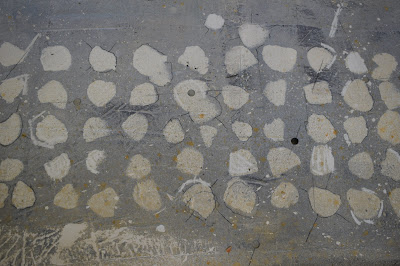Every era has to reinvent the project of “spirituality” for itself. (Spirituality = plans, terminologies, ideas of deportment aimed at the resolution of painful structural contradictions inherent in the human situation, at the completion of human consciousness, at transcendence.)
Krishnamurti claims that we must give up psychological, as distinct from factual, memory. Otherwise, we keep filling up the new with the old, closing off experience by hooking each experience into the last. We must destroy continuity (which is insured by psychological memory), by going to the end of each emotion or thought. And after the end, what supervenes (for a while) is silence.
In the modern era, one of the most active metaphors for the spiritual project is “art.” The activities of the painter, the musician, the poet, the dancer et al, once they were grouped together under that generic name (a relatively recent move), have proved to be a peculiarly adaptable site on which to stage the formal dramas besetting consciousness, each individual work of art being a more or less astute paradigm for regulating or reconciling these contradictions. Of course, the site needs continual refurbishing. Whatever goal is set for art eventually proves restrictive, matched against the widest goals of consciousness. Art, itself a form of mystification, endures a succession of crises of demystification; older artistic goals are assailed and, ostensibly, replaced; outgrown maps of consciousness are redrawn. But what supplies all these crises with their energy — an energy held in common, so to speak — is the very unification of numerous, quite disparate activities into a single genus. At the moment at which “art” comes into being, the modern period of art begins. From then forward, any of the activities therein subsumed becomes a profoundly problematic activity, each of whose procedures and, ultimately, whose very right to exist, can be called into question. Following on the promotion of the arts into “art” comes the leading myth about art, that of the “absoluteness” of the artist’s activity. In its first, more unreflective version, this myth considered art as an expression of human consciousness, consciousness seeking to know itself. (The critical principles generated by this myth were fairly easily arrived at: some expressions were more complete, more ennobling, more informative, richer than others.) The later version of the myth posits a more complex, tragic relation of art to consciousness. Denying that art is mere expression, the newer myth, ours, rather relates art to the mind’s need or capacity for self-estrangement. Art is no longer understood as consciousness expressing and therefore, implicitly, affirming itself. Art is not consciousness per se, but rather its antidote — evolved from within consciousness itself. (The critical principles generated by this myth were much harder to get at.) The newer myth, derived from a post-psychological conception of consciousness, installs within the activity of art many of the paradoxes involved in attaining an absolute state of being described by the great religious mystics. As the activity of the mystic must end in a via negative, a theology of God’s absence, a craving for the cloud of unknowingness beyond knowledge and for the silence beyond speech, so art must tend toward anti-art, the elimination of the “subject” (the “object,” the “image”), the substitution of chance for intention, and the pursuit of silence. In the early, linear version of art’s relation to consciousness, a struggle was held to exist between the “spiritual” integrity of the creative impulses and the distracting “materiality” of ordinary life, which throws up so many obstacles in the path of authentic sublimation. But the newer version, in which art is part of a dialectical transaction with consciousness, poses a deeper, more frustrating conflict: The “spirit” seeking embodiment in art clashes with the “material” character of art itself. Art is unmasked as gratuitous, and the very concreteness of the artist’s tools (and, particularly in the case of language, their historicity) appears as a trap. Practiced in a world furnished with second-hand perceptions, and specifically confounded by the treachery of words, the activity of the artist is cursed with mediacy. Art becomes the enemy of the artist, for it denies him the realization, the transcendence, he desires. Therefore, art comes to be estimated as something to be overthrown. A new element enters the art-work and becomes constitutive of it: the appeal (tacit or overt) for its own abolition — and, ultimately, for the abolition of art itself.
https://www.opasquet.fr/dl/texts/Sontag_Aesthetics_of_Silence_2006.pdf
https://www.brainpickings.org/2015/07/06/the-aesthetic-of-silence-susan-sontag/





No comments:
Post a Comment